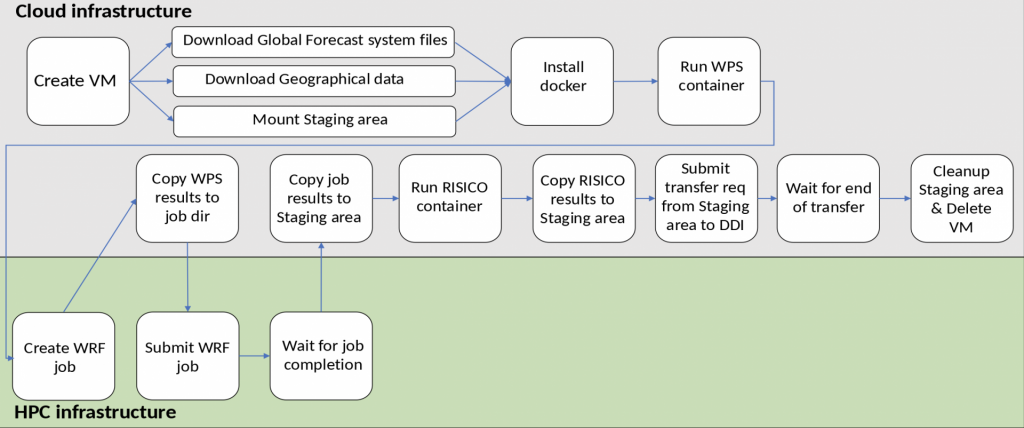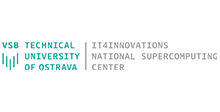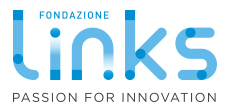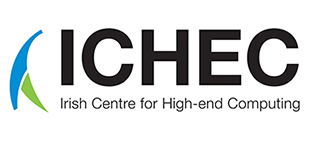Weather and Climate pilot focuses on forecasts concerning weather, flood, forest fire, air pollution and agriculture
The Weather and Climate pilot focuses on a complex system, to provide a diverse set of forecasts concerning weather, flood, forest fire, air pollution and agriculture. The Weather and Climate pilot encompasses several complex workflows each consisting of various meteorological components. These workflows will include in their final release the ingestion of conventional and unconventional observations, global weather models, regional weather models, application models and socio-economic impact models.
Fully orchestrated workflows of the Weather and Climate Large-scale Pilot in LEXIS have already reached considerable intrinsic complexity as in the case of the WRF (Weather and Research Forecasting) model and RISICO (RISchio Incendi e COordinamento/Fire Risk and Coordination) model. WRF is a proven mesoscale numerical weather prediction system, designed to serve both operational forecasting and atmospheric research needs. It features multiple dynamical cores, a 3-dimensional variational (3DVAR) data assimilation system, and a software architecture allowing for computational parallelism and system extensibility. RISICO is a mathematical model to support operators in forest fire prevention activities. RISICO is powered by a continuous data flow consisting of meteorological information both from weather forecasts and in situ observations.
At the current stage the WRF and RISICO workflow has already realized a significant degree of convergence between cloud computing and HPC. On the cloud computing side, it concerns the creation of a virtual machine responsible for downloading the initial and boundary conditions of global circulation model as well as geographic static data and mounting the staging area. Subsequently, the docker is installed and the WRF Preprocessing System (WPS) to prepare initial and boundary conditions is executed. Then a WRF job is created and executed on the HPC infrastructure using aforementioned initial and boundary conditions data. The WRF results are copied back on the cloud infrastructure staging area allowing for the execution of the RISICO container, whose results are stored on the LEXIS Distributed Data Infrastructure (DDI). Likewise, hydrological risks (Continuum model), heavy rainfall alerts (ERDS – Extreme Rainfall Detection System) and air quality (ADMS) can be assessed. With respect to previous projects (FP7 DRIHM), where only limited workflow automation was available, a much broader range of applications is possible without experts having to stand by or even execute steps manually. The available computing systems are optimally leveraged, so that the application models run perfectly as containers on the Cloud infrastructures at LRZ and IT4I, while WRF is a classical HPC job.

Figure 1: WRF-RISICO workflow from the Weather and Climate Large-scale Pilot, as presented on SC2020 conference poster (M. Hayek et al.)



















